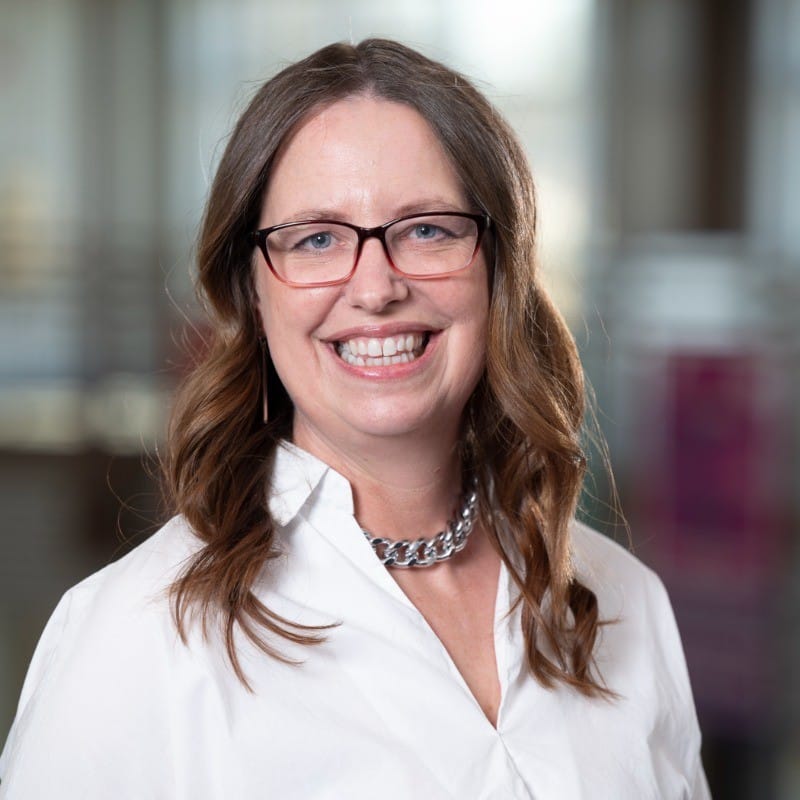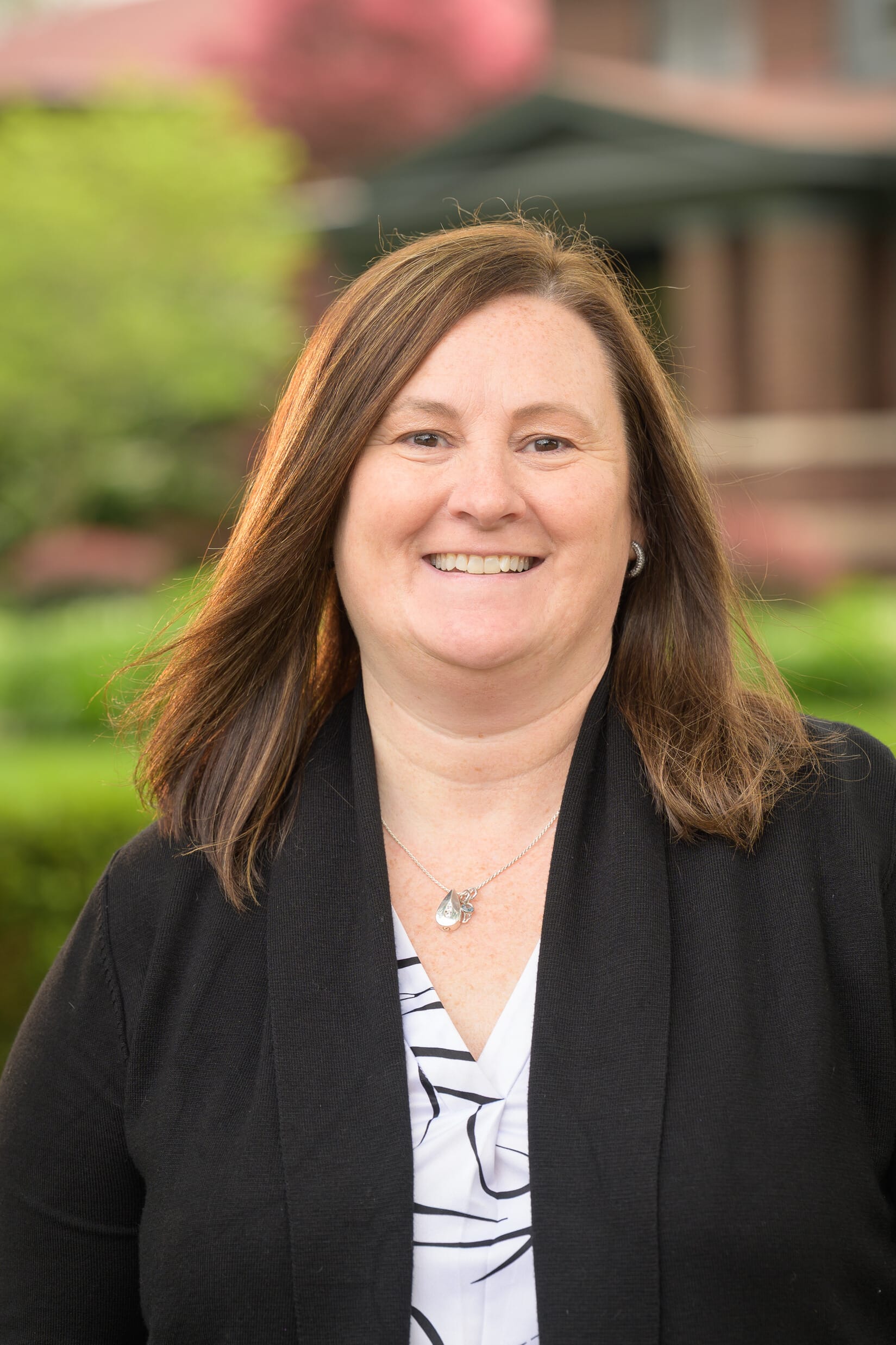Q&A with Fort Wayne's new Manager for Homeless Services

While there’s limited data on the subject, many Fort Wayne leaders believe homelessness is increasing city-wide.
It’s a challenge that’s not unique to Fort Wayne – particularly since the pandemic. And yet, for many in local leadership, it’s a challenge that’s top-of-mind right now – especially as the city intends to keep growing its housing options and population despite impending state and federal budget cuts.
As Deputy Director of Housing and Neighborhood Services for the City, Kelly Lundberg says Mayor Sharon Tucker has a special interest in housing and homelessness, too. As a former Executive Director of Vincent Village transitional housing for families, Mayor Tucker met with Lundberg’s team several times when she took office in 2024, asking how the City was addressing homelessness at its current staffing levels.
“She felt that we really didn’t have enough capacity to give homelessness strategies in Fort Wayne as much attention as she felt they deserved,” Lundberg says.

This resulted in the hiring of Fort Wayne’s first Community Development Manager for Homeless Services, Amanda Fall, who started in early March and focuses on identifying solutions to homelessness locally as well as partnering with area service providers to fill gaps.
“Before Amanda’s role, we really didn’t have anybody at the City level who had this work in their job description,” Lundberg says. “We were always trying to cobble together enough time to make a dent in everything that needs to be done. Obviously, we still don’t feel like having one person at the City who focuses on homelessness is enough. But we think it’s going to move the needle a lot more than we were able to previously.”
We sat down with Lundberg and Fall to learn more about Fall’s new role and the challenges and opportunities she’s seeing so far.
Amanda, tell us more about your background, and what prepared you for this role?
AF: I am a Fort Wayne native and an Elmhurst graduate. I went to the University of Saint Francis for Social Work and got my masters in Business at Indiana Tech. My first 25 years, I did a lot of social work. I worked for the AIDs taskforce and then when I was the Director of Operations for the Fort Wayne Women’s Bureau (when it existed). I ran a program that provides transitional housing for addicted women working to unify with their children. I’ve also been Director of the Downtown YMCA Central Branch. There were many good social work opportunities there, and the Y plays such a big role in Downtown, in general. So when this position with the City became available, it was a good match for my various skillsets.
We’ve recently learned about Mark Sharin’s work as an Ambassador working on homelessness at Downtown Fort Wayne. How does your position with the City relate to what he’s doing?
AF: Mark’s role is more hands-on – walking the community, building relationships, doing one-on-one interventions on the street. While I do a little bit of that, my role is more about coordinating care, and coordinating among service providers, which involves listening to Mark and other people working in the encampments to see how I can connect individuals to our service providers. Overall, Mark’s role is more frontline, and my role is more working on the system itself.
What are some of your goals?
AF: In my short time here, I’ve worked to narrow the scope of my job to three big goals.
- Strengthen care for the unhoused. That means working with service providers to see what support the City can offer, helping them collaborate and identifying gaps as well as current services or providers able to fill those gaps. (The city’s two-year-old program, Everyone Home, in partnership with United Way, falls into this category.)
- Working on the City’s Encampment Strategy. We recently had our first Encampment Task Force meeting locally with about 22 people in attendance, like service providers, law enforcement and other stakeholders, including a citizen with lived experience of homelessness. We hope to work together more regularly to better serve unsheltered citizens and create community-wide solutions.
- Helping Downtown businesses and neighborhoods identify resources and education related to housing and homelessness. We want to improve education for people and business owners interacting with people who are unhoused. This involves everything from conflict de-escalation to crime prevention through environmental design (like better lighting, safer entrances and things like that to reduce opportunities for crime).
What de-escalation resources can local business owners and organizations utilize?
AF: The FWPD’s HART (Hope And Recovery Team) team offers de-escalation trainings. HART has been a really successful program of the FWPD so far. It’s primarily made up of social workers, and it’s one of eight similar teams nationwide, piloting a model for incorporating more social work into policing. Its targeting substance use and mental health concerns, in general, but you can’t have a conversation on substance use without touching the homeless population.
What other needs have you identified in Fort Wayne so far?
AF: Until we have more affordable housing, we’ll continue to see homelessness. Most cities nationwide are struggling with that. We also need more permanent supportive housing with services attached. We’ve increased our amount of supportive housing in Fort Wayne in the last couple of years, but we still do not have enough to meet needs.
We also need more day shelters or places where unhoused people can go throughout the day to receive mail or shower. A zero-barrier to low-barrier shelter would also be a welcome addition to Fort Wayne. We’re blessed to have many wonderful transitional shelters locally, but there are barriers or demographic restrictions to many of those.
What’s the difference between a low-barrier and zero-barrier shelter?
KL: Low-barrier generally means the rules and screenings are fairly low for people to get into the shelter. However, we’ve identified that maybe what we need to be focusing on in Fort Wayne is getting a shelter that’s as close to zero-barrier as we can get. That means, you still can’t be violent or actively using substances on site. But for us, zero-barrier would mean you could be actively high or using drugs; as long as you’re not using onsite and not violent, you’re allowed to stay. Right now, we have no zero-barrier shelters and only one low-barrier shelter for veterans, which is Safe Haven.
Have you seen examples of zero-barrier shelters done well?
KL: One great example is actually in Lafayette, Indiana. It’s called LTHC Homeless Services, and it’s zero-barrier. They have day services, so people can come in and hang out during the day with access to meals, showers and laundry facilities. But they also have space for partner organizations to work with clients, and they work with their Department of Health to send nurse practitioners in. They have some overnight beds, too, including respite beds for people recently released from the hospital. They also work closely with other shelters in the area to make sure people are going to those, too, so they fill a big gap. A group of us from the City recently toured their facility and met with their Executive Director, so something similar to LTHC is what we would really like to see replicated here, if possible.
How does the perception of who is “homeless” in Fort Wayne differ from the reality?
KL: The stereotype is often: It’s just men and veterans, and while those individuals do exist, there are so many populations and sub-populations of homeless individuals in our community. Two of the largest segments are children (40%) and families (60%). We’ve seen this anecdotally, too. When we opened the City’s Winter Contingency Space the first year, we put together a plan, thinking that, based on previous things we had seen, the need was in beds for single men. So we planned for that being the population that needed serving. But the people who showed up and needed services were families – so many families. So this past year, we planned for a gap in beds for families, and it was still the biggest need we had. We couldn’t serve enough families. People are often highly attuned to homelessness as the men they might see on the sidewalks Downtown, but the reality is: Our homeless population is a lot of single moms and families.
One concern we’ve heard from critics is that: If you make more services for homeless people, more people who need those services will come to Fort Wayne. What’s your take on that?
AF: It is a perception, but the fact of the matter is: We already have people here who we’re not able to serve because we don’t have enough services in Fort Wayne. We owe it to our own neighborhoods and communities to have services for those who are here. I think most people on all sides of the issue would agree: The status quo is not working. We’ve found that what you need then is more services.
We understand there’s some concern about other cities “busing people into Fort Wayne for care,” but the reality is: A lot of our smaller regional communities do not have the same resources we have available to their citizens, so when they encounter someone who needs services, of course they’re going to send them to a place that has those services. But they’re not necessarily just letting people out onto the streets.
As a former addictions provider, I can also tell you it’s common for communities of all sizes to send people recovering from addiction elsewhere for them to get help and get out of their patterns and routines where they currently use. So even in Fort Wayne, there are sometimes good reasons why our citizens go to other treatment facilities for the same reasons.
Looking to the future, what challenges does Fort Wayne face in addressing homelessness?
KL: We saw a big increase in funding during the pandemic, which allowed us to do great things, like fund the Acquisitions and Rehab Unit of St Joseph Mission to create the very first shelter for unaccompanied women in Fort Wayne. We’re hoping to use some pandemic funding to provide beds for unaccompanied youth, too, which right now, there are zero in Fort Wayne. But while that funding has been a great opportunity, that money is drying up right now, and the last of it will be spent soon. On top of that, service providers are also dealing with budget cuts from the state and federal governments coming down the line, which means a lot of grants and programs are at risk. We’re hearing concerns from our nonprofit partners across the board that they’re not sure if they’re going to be able to maintain their existing level of services – let alone increase services to meet the needs of our growing city. So it’s a very uncertain time.
We’re thankful City Council approved funding for Amanda’s position in the City’s 2025 budget.
